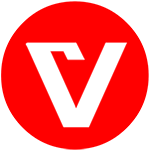
ASME B31.3 and B31.1 Practical Piping Design for Process and Power Applications
About This Course
Are you qualified as an inspector or a supervisor? As an Engineer, Designer or Contractor do you aspire to have a stronger understanding of the relationship between the fabrication and manufacture compared to the design and construction of pipes? Are you a piping engineer who wants to compare and contrast the similarities and differences between Process and Power Piping codes?
This course introduces the ASME B31.3 Process Piping Code. It covers the requirements of B31.3 for design, analysis, materials, fabrication, testing, and inspection of process piping systems. Since these requirements are similar to that of ASME B31.1 Power Piping Code, it notes significant and subtle differences between the two Codes. While the Codes are different, it boils down to good piping design. The course explores the rules for various components which includes fittings, connections, bends, valves, and specialty components. Other topics include dimensions and ratings of components, fluid service requirement for joints, piping flexibility and support, welding, heat treatment, bending and forming, brazing, and soldering, assembly, erection, examination, and inspection.
Learning Objectives
Material Includes
- Digital course notes via ASME’s Learning Platform
- Access to digital copies of ASME B31.3 Power Piping Code
Requirements
- Please bring a calculator to each day of class.
Target Audience
- Jurisdictional, in-company examination and inspection, and QA/QC personnel seeking to understand the design and construction requirements they are responsible to assure and control
Curriculum
PD837 Module’s
Module 1 : Introduction Aims, Objectives & Outcomes
Case Study 1
Module 2 : Scope and Definitions (Chapter I Para 300/100)
Case Study 2
ASME B31.1 and B31.3 Quiz
Module 3 : Design Conditions and Design Criteria
Case Study 3
Module 4 : Pressure Design of Piping Components (Chapter II, Part 2)
Module 5 : Fluid Service Requirements & Standards for Piping Components (Chapter II, Part 3 & Chapter IV) Para. 305-309 & Para. 326
Module 6 : Fluid Service Requirements for Piping Joints (Chapter II, Part 4) Para. 310-318
Case Study 6
Module 7 : Flexibility and Support (Chapter II, Part 5) Para. 319-321 Para. 119-121
Case Study 7
Module 8 : Metallic Bellows Expansion Joints Appendix X (B31.3) Appendix P (B31.1)
Case Study 8
Module 9 : Systems (Chapter II, Part 6)
Module 10 : Materials (Chapter III) Para. 323-325 Para 123-125
Case Study 10
Module 11 : Fabrication, Assembly, and Erection (Chapter V) Para 327-328 Para 127-135
Module 12 : Inspection, Examination, and Testing (Chapter VI) Para 340-345 Para 136-137
Module 13 : Precautionary Considerations Appendix F
Module 14 : Safeguarding Appendix G & Chapter VIII
Module 15 : Nonmetallic Piping and Piping Lined with Nonmetals
Module 16 : High Pressure Piping (Chapter IX)
Module 17 : High Purity Piping (Chapter X)
Module 18 : Course Summary
Case Study
Your Instructors
Course Author-ASME
ASME Learning & Development is recognized as a leader in training for engineers
Web Developer
See moreMahmoud Abdallah
CEO
- ASME B31 Committee member,
- ASME Authorized Training Instructor,
- President of Society of Piping Engineers and Designers-Egypt Chapter
- Certified as Value Methodology Associate VMA from SAVE® International
- Head of Department -Plant Layout and Piping, thyssenKrupp Uhde. (2005-2025)
- Certified as Pan-Arab Energy Management Professional.







